Did you ever come across an animal that you couldn’t quite figure out whether it was a donkey, a mule, or a burro? If yes, continue reading to find out what sets them apart from each other. Given the amount of resemblance, these three animals have been pooled into one category when it comes to identifying them. A significant similarity that donkeys share with mules and burros is that all three of these belong to the Equidae family.
Donkeys, mules, burros & the Equidae family
Also known as the horse family, Equidae refers to the taxonomic group of horses and related animals, including the extant horses, donkeys, zebras, and many other species. To learn how donkeys, mules, and burros are different from each other, it is important to explore their characteristics individually.
Donkeys

Donkeys are a domesticated group belonging to the horse family. As you can infer from the table above, donkeys hail from African descendants of African Wild Ass. Their color ranges from white to grey/black with a dark stripe running from mane to tail along with a crosswise stripe along the shoulders.
They possess a short and upright mane and a tail long-haired only at the end. This tail holds a resemblance more to a cow than to a horse. Their ears are quite long and dark at the base and tip. Although they share a family with horses, donkeys are surprisingly sturdier owing to their surefooted personality.

Unlike horses, it takes a lot to startle a donkey which people might also mistake for stubbornness. But in reality, they are simply great at assessing situations. Donkeys also are more hard-working when it comes to carrying the burden and hence are also titled as the beasts of burden because they can carry a large amount of weight on their back.
Mules
Most of the time the word mule is used synonymously for a donkey, and anyone who is well versed in the differences between them knows how wrong it is to assume the same.
So for starters what exactly is a mule?
A mule is a hybrid that exists between a horse and a donkey. Which is to say that it is an offspring of a male donkey and a female horse. Having come from two different species with distinct chromosome numbers, it is not surprising to note that mules are sexually sterile. This is a common phenomenon in hybrid offsprings. Also, it is important to note that their height ranges from 35-70 inches.

Now let’s explore the characteristics they share with their parents individually.
Commonalities with Horse
With horses, they share similarities in height, uniformity of coat, croup, and neck shape.
Commonalities with Donkey
Mules have a lot of resemblance with donkeys in terms of their short, thick heads, long ears, thin limbs, small hooves, and short mane. The coat is usually brown or bay.
Now that we know what characteristics mules inherit from their donkey and horse parents. It is time to learn what traits have arisen in them in a blended fashion.
Their sounds are a mix of both parents; a mule bray begins with the common horse whinny and finishes with the hee-haw bray of a donkey.
When it comes to their personality and temperament, mules tend to enjoy the best of both worlds. Mules are typically calm, steady, and strong, which is somewhat a desirable characteristic in every farm animal. That’s why mules are often preferred by riders over the occasional flighty and easily startled horse for mountainous and rugged terrains. This phenomenon, where a hybrid offspring turns out to have superior qualities as compared to its parents that differ from each other in terms of species, can be pretty much explained by the term ‘hybrid vigor’ which is more than common in hybrids.
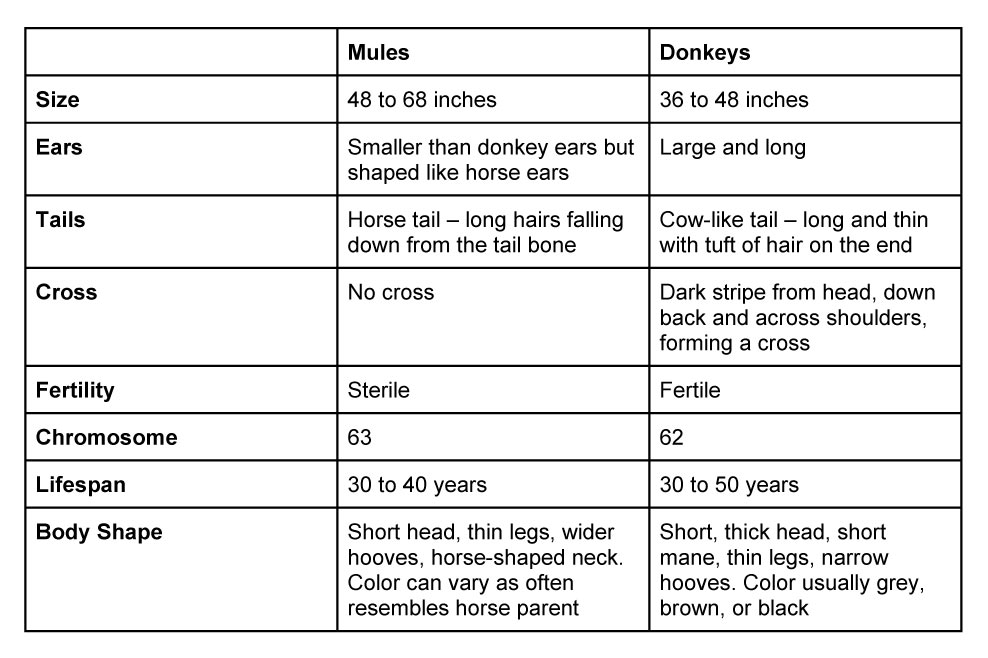
Burros
Burro is a Spanish term for wild donkeys. Hence it is safe to assume that all burros are donkeys but not all donkeys are burros. We can distinguish burros from donkeys based on the following criteria.
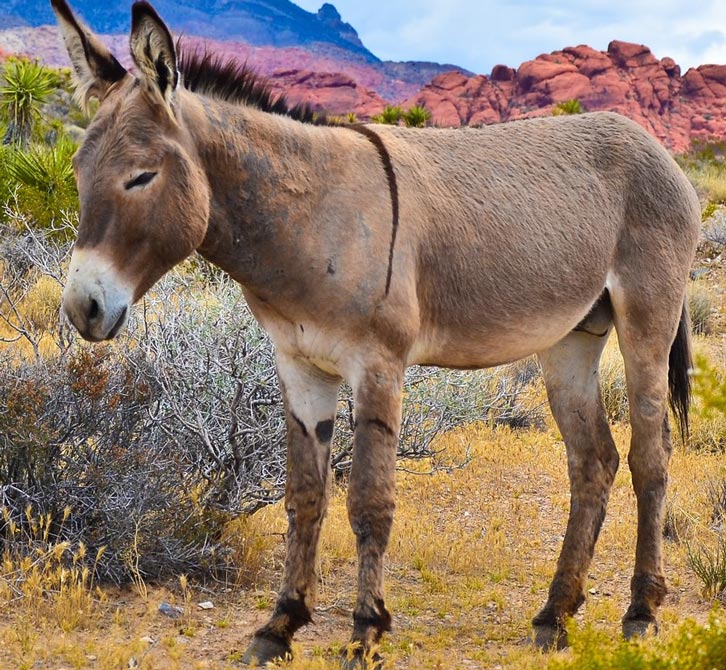
Language
Now that we have gained a little insight about donkeys, hence it will be easier to understand what a burro is. Linguistically a burro is nothing but the Spanish word for donkey. But that’s just a linguistic difference, let’s see what other differences are there between the two.
Geographical location
The geographical position can help us in determining whether it is a donkey or a burro. Since the word, “burro” has a Spanish origin and exclusively refers to donkeys from Spain, Mexico, and South and Central America, donkeys belonging to these regions will almost always be considered burros, regardless of size.
Size
When it comes to height, burros tend to be shorter than donkeys. These changes could have arisen because of the difference between the geographical habitat of the two.
Fur and color
Donkeys possess a wide spectrum of appearances out of which the most common is grey-brown with a dark stripe running down the back or cross across the shoulders. In addition to it, solid white, solid black, black, or chocolate brown with white markings, or light with dark spots might also be present. While on the contrary, the only common coloration that burros display is grey-brown with a dark stripe or cross.
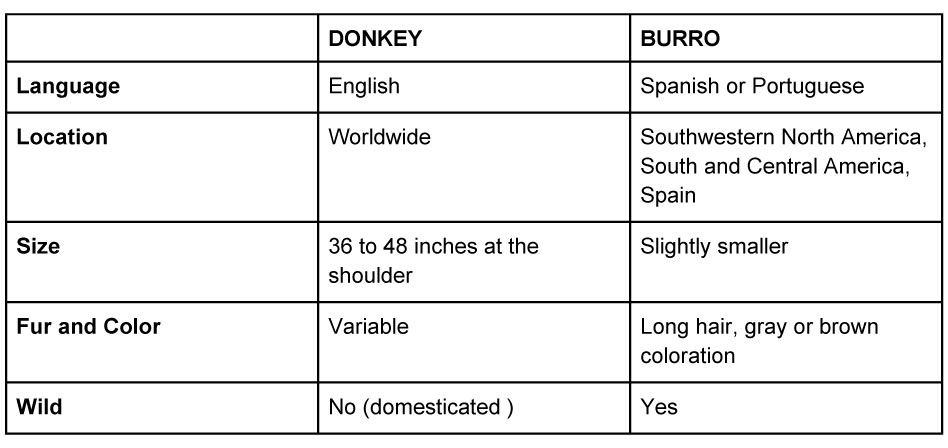
Conclusion
So far we have discussed various aspects in detail, it is time to finally end the debate; donkey vs mule vs burro. To put it briefly, these three animals aren’t similar. Donkeys are domesticated in nature, while a burro refers to a wild donkey whose name has Spanish roots. On the other hand, a mule is an offspring of a male donkey and a female horse that has been endowed with characteristics from both of its parents. Here’s to hoping that you will be efficiently able to recognize the next time you come across a donkey, a mule, or a burro. Who knows if the animal will love you for being mindful of its identity?
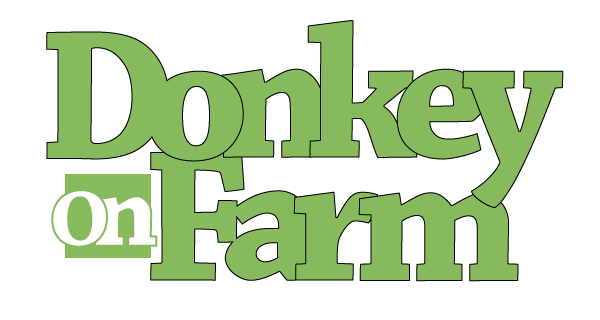
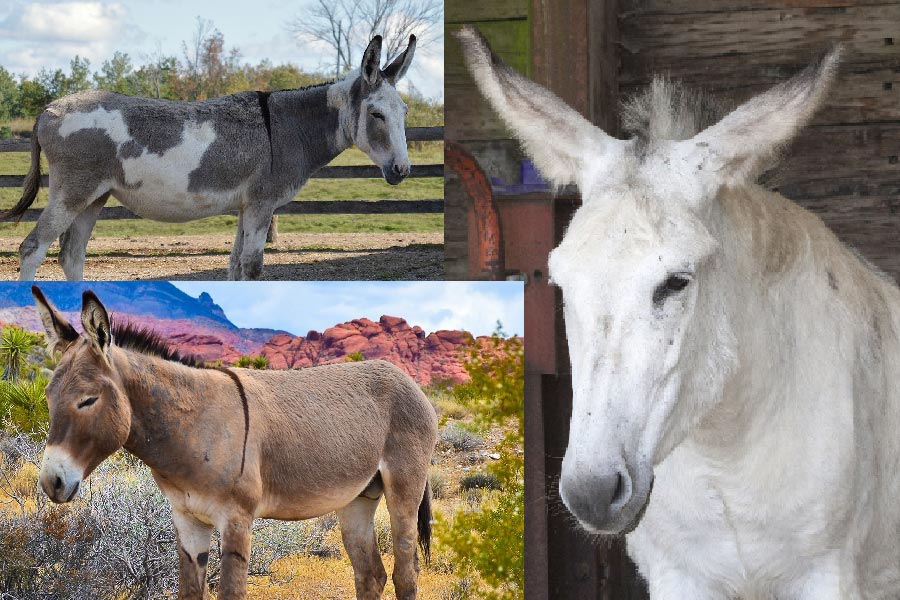

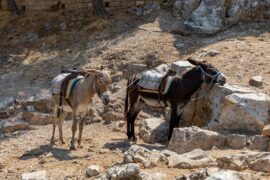
![What Are Mules Used For? [How Are They Better?] what are mules used for](https://donkeyonfarm.com/wp-content/uploads/2023/08/preview16_11zon-270x180.jpg)
![What are the Differences Between a Mule and a Hinny? [Which is Better?] difference between a mule and a hinny](https://donkeyonfarm.com/wp-content/uploads/2023/08/difference-between-a-mule-and-a-hinny-270x180.jpg)
![7 Large Donkey Breeds That You Should Know [With Pictures] large donkey breeds](https://donkeyonfarm.com/wp-content/uploads/2023/07/ass-1220250_1280_11zon-270x180.jpg)